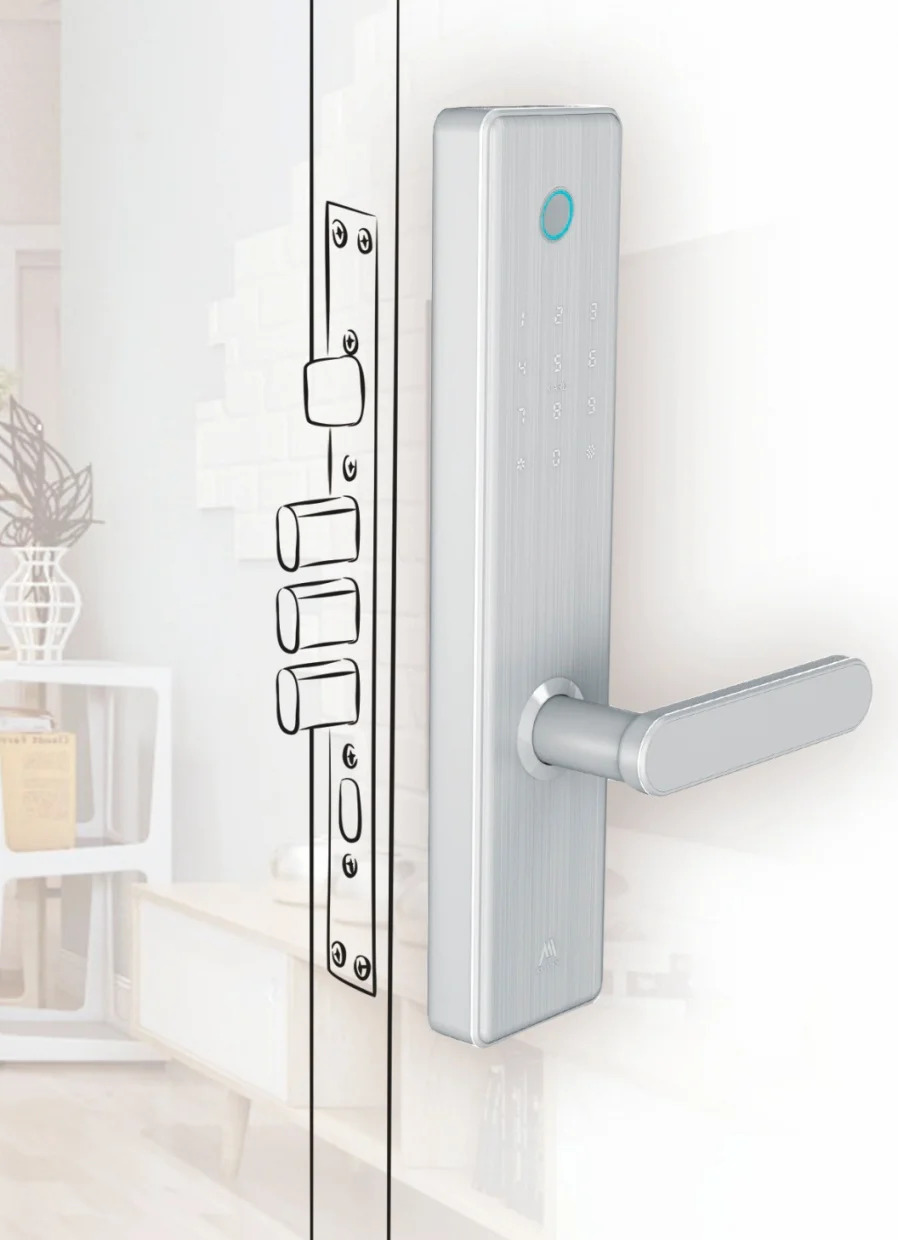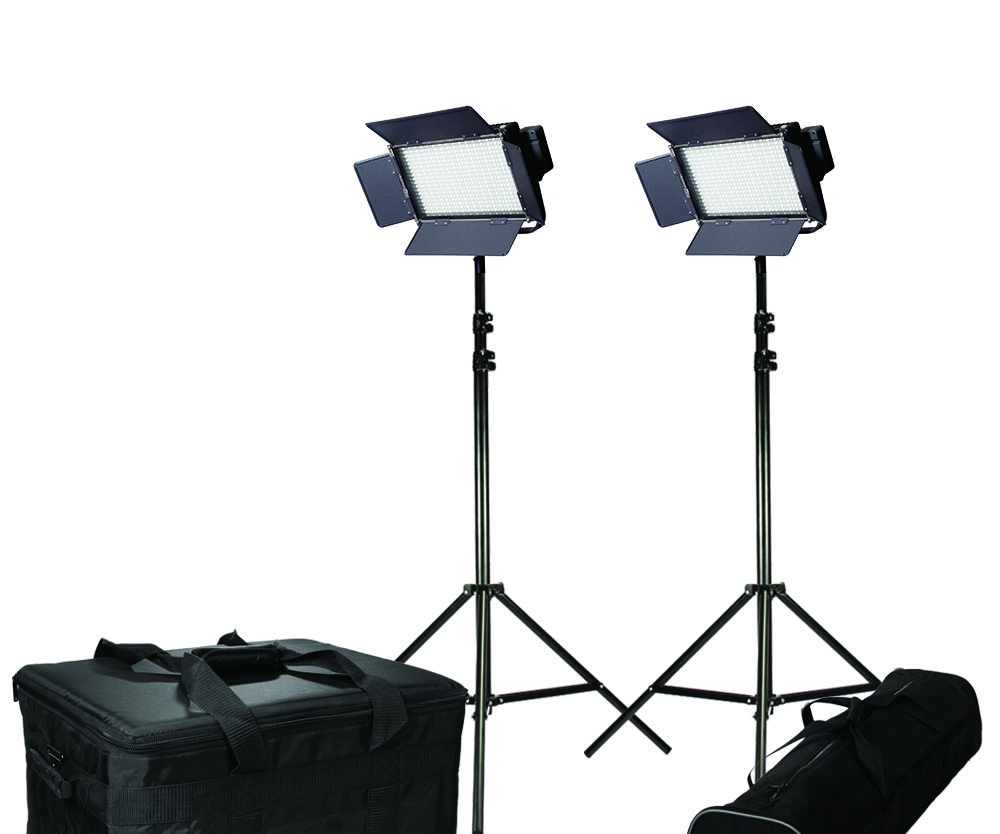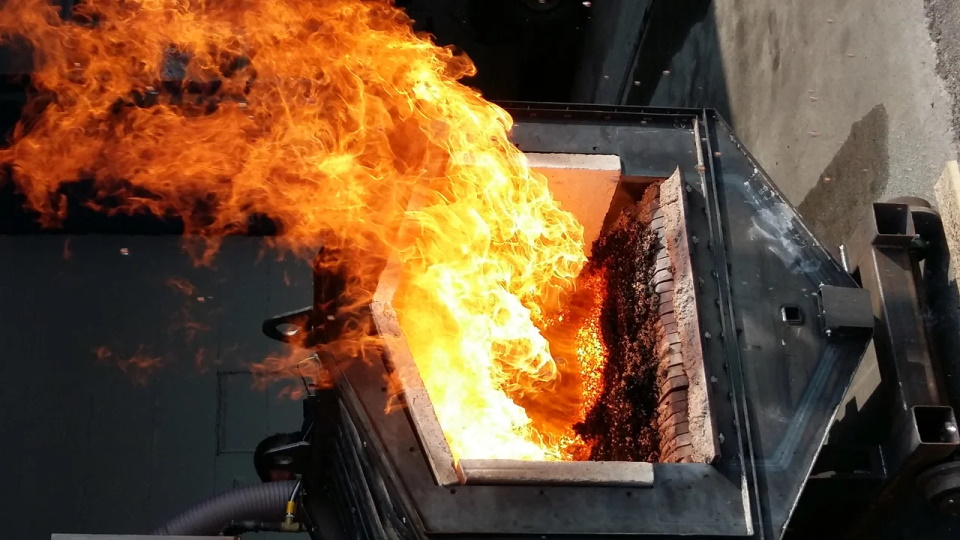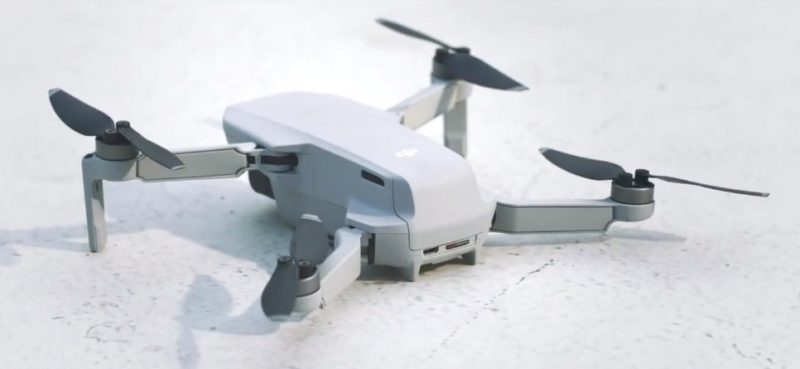Rating of the best drainage channels and storm drains for 2025

The creation of a well-equipped stormwater / drainage system is the key to effective and modern removal of excess moisture in the territory of a country house. Exceeding the permissible level of water concentration in the soil will easily lead to a gradual deformation of the foundation, an increase in the level of humidity in the basement and basement spaces. Among other things, excess water will contribute to the rapid development of mold and fungal colonies.
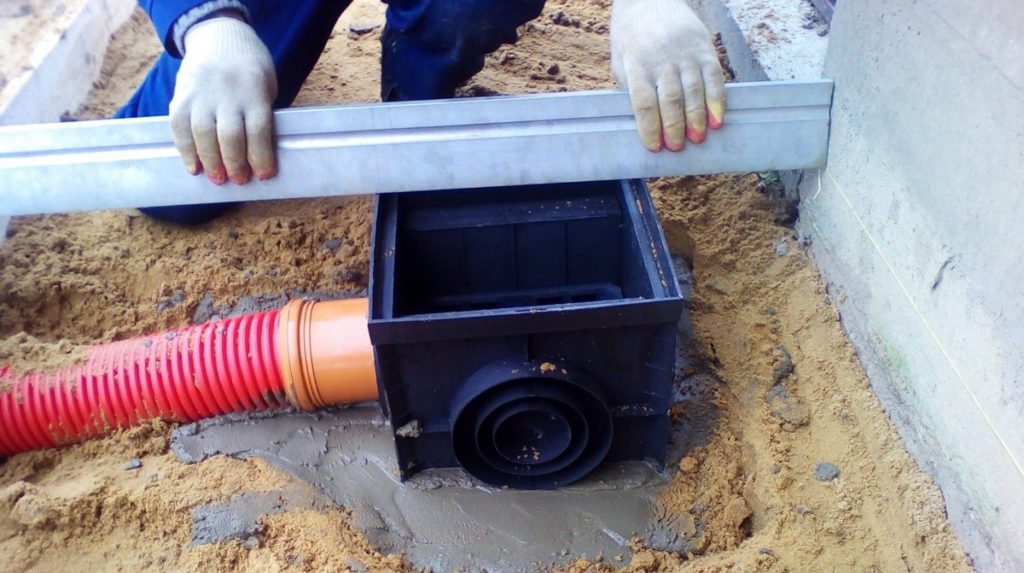
Content [Hide]
- 1 Purpose of drainage systems
- 2 The need for drainage
- 3 Types of modern drainage systems
- 4 Parameters affecting the selection of drainage pipes
- 5 Features of maintenance and operation of drainage systems
- 6 Rating of the best drainage channels and storm drains for 2025
- 7 Instead of an epilogue
Purpose of drainage systems
It is a complex of elements, which includes special trays or pipes designed to drain excess water from the backyard. The water collected in a special reservoir, with the help of a special drain system, will later be transported to the nearest reservoir or ravine. The main purpose of a storm drain is to protect the foundation of buildings from the harmful effects of groundwater and to ensure normal soil moisture indicators, which clearly contributes to the growth of crop yields.
Increased soil moisture can be associated with shallow water in the ground, heavy precipitation or accelerated snow melting and can lead to serious troubles:
- The presence of excess water in the ground condones its uneven distribution under or near the foundation.This may not be a problem if the house is built on a pile-screw or pile foundation, however, if the building is erected on a shallow foundation, then the likelihood of frost heaving during the cold season increases greatly.
- The frozen soil under the foundation acts on its sole and pushes it up, while the supporting structures do not experience such movement. This can lead to both the destruction of the foundation itself and the walls of the building. A similar situation may arise with paths paved with paving slabs or other material.
- High humidity contributes to the spread of mold and other fungi, worsens the overall microclimate in the room and provokes colds and respiratory diseases. Cases have been noted where the spread of mold led to the fact that the building had to be demolished.
- Excess moisture leads to rotting of the root system of domestic plants, which leads to a decrease in yield and their death.
- Also, if an outbuilding or a garage is located on damp soil, then premature corrosion of the tool, car and other metal objects of structural elements is inevitable.
The need for drainage
All of the above problems associated with high soil moisture can be eliminated or prevented with the help of properly arranged drainage, which promptly removes excess moisture outside the site or into a special container. There are a number of signs that clearly indicate the need for a drainage device:
- After rain, puddles and mud remain on the site for a long time;
- For no apparent reason, garden trees and houseplants die;
- Intensive mold formation in basements;
- The soil remains moist even during a brief drought;
- A large number of weeds that love moisture, such as nettles or cattails;
- the location of the site in a wetland or near a reservoir.
IMPORTANT! There are signs by which it can be unambiguously determined that groundwater flows no more than 1.5 m from the soil surface. With such a depth of the aquifer, a mandatory drainage device is required.
Types of modern drainage systems
Existing modifications can be divided into two categories:
- Located on the surface (open);
- Buried in the ground (closed).
closed point drainage
This variety involves the use of special pallets stacked in trenches. From above, the moat is covered with decorative gratings. This design provides free flow of water into the drainage channels, in addition, it excludes clogging of the channel with leaves, soil and other objects. Due to the affordable cost, high performance properties and a long period of operation, concrete trays and plastic trays are most widely used.
deep systems
Deep drainage is divided into two categories:
- Local;
- General.
In the presence of general drainage, moisture is removed from the entire territory of the site. The local drainage system is designed to drain water from a specific building or object located on the site. Such objects include: residential and outbuildings, garden paths, beds, etc. Depending on the design features, local drainage systems can be:
- wall;
- ring type;
- Plast type.
wall
It is advisable to use this type of drainage for the removal of melt and groundwater from basements and semi-basements built on clay and loamy soils. In addition, it performs preventive functions. Usually completed with pipes with filtering capabilities. To ensure efficient operation, the pipes must be located above the level of the foundation. The distance from the basement is determined by the design features of the building. If the foundation of the house is too deep, then it is quite acceptable to install such a drainage system on the surface. However, one should take into account the possibility of soil subsidence under the weight of structural elements.
ring drainage
This type of drainage allows for effective removal of excess water from foundation structures and from basements. Such drainage is used if the system of general deep drainage does not ensure the removal of excess moisture in full. Most often, this situation occurs on sandy soils. In addition, ring drainage allows for efficient removal of pressure groundwater. The ring drainage system is located below the floor level around the entire perimeter of the building. This arrangement provides effective protection against moisture in residential and commercial buildings. The functionality of the system is directly related to the area of the site and the depth of groundwater. Ring drainage can be installed after completion of general construction work.
Reservoir drainage system
Used to drain groundwater. Laying is carried out in parallel with the construction of the building. Typically, such a system provides for communication with a tubular drain.It is advisable to install it above the ground level (containing groundwater) at the base of the building. Reservoir drainage has an underground drain, through which the collection and removal of groundwater is carried out.
Reservoir drainage is advisable in the following cases:
- The tubular system is not able to reliably protect the building from groundwater seepage;
- The soil of the site consists of various heterogeneous rocks;
- There are flooded closed zones on the territory of the site.
IMPORTANT! The main advantage of the reservoir drainage system is that it effectively removes not only groundwater, but also capillary moisture. Installation of reservoir drainage begins with sand filling under the building. Further, channels from crushed stone or gravel are formed in this sand. The depth of such channels should be at least 0.2 m. The location of the channels depends on the topography of the site and its hydrogeological features.
Surface drainage
The device for storm sewers to drain water is quite simple. The drainage tray is a gutter, which can be U-shaped or U-shaped, depending on the material. On top of such a drainage drain there is a grate into which rainwater is drained and subsequently redirected to the sewer.
Depending on the permissible load, such drain channels are divided into groups:
- A15 have a low degree of load, so they can only be mounted in relatively dry places: on sports grounds, along the paths of country houses, in areas where park and bicycle paths are located;
- B125 are more stable, so they can be mounted along the roads for cars;
- C250 are suitable for installation in car washes and car services;
- D400 are suitable for installation along roads intended for all types of transport, as well as in industrial areas;
- E600 is laid next to industrial plants and warehouses;
- F900 are suitable for installation near military bases, airports and airfields.
Drains are divided into groups not only on the basis of the load on them, but also on the basis of the materials from which they are made. The most common groups of raw materials used for the manufacture of gutters should be considered in more detail.
Plastic
For the manufacture of plastic stormwater use polypropylene and HDPE - low pressure polyethylene. All plastic models, due to the fact that they cannot be called durable, can only be classified as categories A-C. Plastic models are lightweight, and their installation by hand will not cause any particular difficulties. If the task is to equip the territory of a country house with gutters for water drainage, then it is recommended to choose plastic models. To increase the strength of such drainage systems, they are equipped with stiffeners. Reinforced plastic options are recommended to be installed near garages, since it is just required to use catchment drains of categories B-C there. Without a grate, the weight of one plastic gutter does not exceed one and a half kilograms with a standard length of 1 m. The width can vary between 7-30 cm. A grate is additionally purchased. It is recommended to choose a relatively light option, for example, made of galvanized steel. And stainless steel options are also suitable. Depending on where the drain is planned to be located, the strength of the grate should also vary. For example, near the garage, the grate should be large enough to support the weight of the car if you accidentally run over it.Polymer sand options are used at facilities under construction, as well as in underground parking lots. There are classes A and B.
metal
Metal rain gutters are a relic, as it seems to many. Most remember the days when such drains were everywhere on the streets. However, the metal does not lose its relevance to this day. It is difficult to find a material stronger and more convenient to use. The only unpleasant moment is that most metal products sooner or later corrode.
The most reliable are cast-iron gutters. In terms of strength, they can only be compared with concrete products, while they are able to withstand a lot of weight. Cast iron storm drains can be found near military bases and other military facilities, where there is a large flow of descending waters. Unfortunately, cast iron products have an impressive weight, which makes them not the most convenient for installation. However, this is where their shortcomings end.
Steel gutters can be of two types: galvanized and stainless steel. In both cases, the options are designed for a much lower load than cast iron, but this does not mean that there are no places for them to use. With the right shapes and placement, they will last no less. So, steel metal structures can be placed along the roads for cars, and they will also fit perfectly into park areas.
Reinforced concrete
These catchment drains combine all the advantages of concrete and metal structures. They are just as strong, have a huge range of categories for resistance to stress. Working with reinforced concrete is easier than just iron, so there is a fairly large selection of gutter shapes. There are not only traditional rectangular options, but also round ones.Reinforced concrete trays are used not only for industrial, but also for domestic construction. They are easy to install, despite their relatively high weight (which, however, is much less than that of cast iron or plain concrete). Both conventional drainage trays and slotted trays for heating mains are produced.
Remarkably, reinforced concrete trays should be used when the water has an aggressive composition. For example, the acid-base balance of pH is disturbed in it. Depending on the composition of the water, a similar design is also chosen, since some brands of concrete simply dissolve under the influence of alkali. Reinforced concrete drains are cheaper than metal counterparts, if we compare samples of the same category in terms of load resistance. When transporting, it is necessary to adhere to some rules, among which - try to avoid shock loads, otherwise the gutter may crack.
Composite
Composite trays are the modern version of concrete trays. Gutters of this type serve several times longer than concrete counterparts, but at the same time they are not inferior to them in terms of performance. Composite variations have some advantages:
- Less weight compared to concrete gutters;
- Ease of installation;
- Ease of transportation;
- Increased water permeability due to smooth surface.
Parameters affecting the selection of drainage pipes
The efficiency and durability of the drainage system is ensured by the right choice of drainage pipes. What does it depend on:
- From the area of the site;
- Heights of groundwater occurrence;
- Average annual rainfall for the region;
- Type of soil on the site;
- relief;
- Laying depths.
In lowland areas, experts recommend using products with a diameter of 63 and 110 mm. They are able to drain the site along the sewerage within a radius of 4-5 m.Flexible single-layer products are laid to a depth of 0.7-1 m.
For example, wall drainage to protect the foundation is carried out with double-walled pipes with a stiffness class of SN 6. They can be placed at a depth of up to 2.5 m. The diameter depends on the volume of water that will pass through the drainage.
The choice of pipes depending on the type of soil:
- Crushed stone - perforated pipe, filter material is not required;
- Sand - pipes with geotextile + crushed stone sprinkling;
- Loam - pipes with a filter wrap + crushed stone sprinkling with a layer of up to 20 cm;
- Clay - pipes wrapped with geotextile or coconut fiber;
IMPORTANT! Pipe laying can be done without crushed stone. Expanded polystyrene in the form of small balls is used as a filter backfill layer.
Features of maintenance and operation of drainage systems
In order for the stormwater system to work properly for decades, while maintaining its throughput, after construction, it is necessary to follow the rules of operation and periodically carry out maintenance. For these purposes, the following points should be followed:
- Rain inlets, trays and other external elements of the storm sewer at home should be covered with grates to prevent large debris from entering;
- After spring floods and downpours, receivers and rotary wells are inspected and cleaned if necessary;
- Every two years, a major cleaning of all elements from debris and sediment is carried out, including rinsing from a hose;
- Every ten to fifteen years, if the need does not arise earlier, a major maintenance is carried out, flushing the system of deposits and deposits with pressurized water in both directions. Rigid blockages are removed mechanically if the hydrodynamic method does not work.
Timely maintenance of individual parts and periodic maintenance of the entire system is the key to trouble-free operation, and repairs, if necessary, without the need for dismantling.
Rating of the best drainage channels and storm drains for 2025
IMPORTANT! As a rule, retail chains DO NOT sell storm drains and drainage systems assembled into a single unit. Everything is sold as separate components. Thus, this rating presents the main elements of the systems under consideration.
rainwater inlets
3rd place: "Alta-profile AP-00000007118 storm water inlet"
votes 0
This storm water inlet is included in the drainage system to protect the foundation and site from accumulations of storm, melt and sewage. The service life is more than 25 years. Made from PVC. It has the most common sizes, it can be adapted for standard drainage. Panel dimensions - 500 x 413 x 131 mm. The recommended cost for retail chains is 1550 rubles.
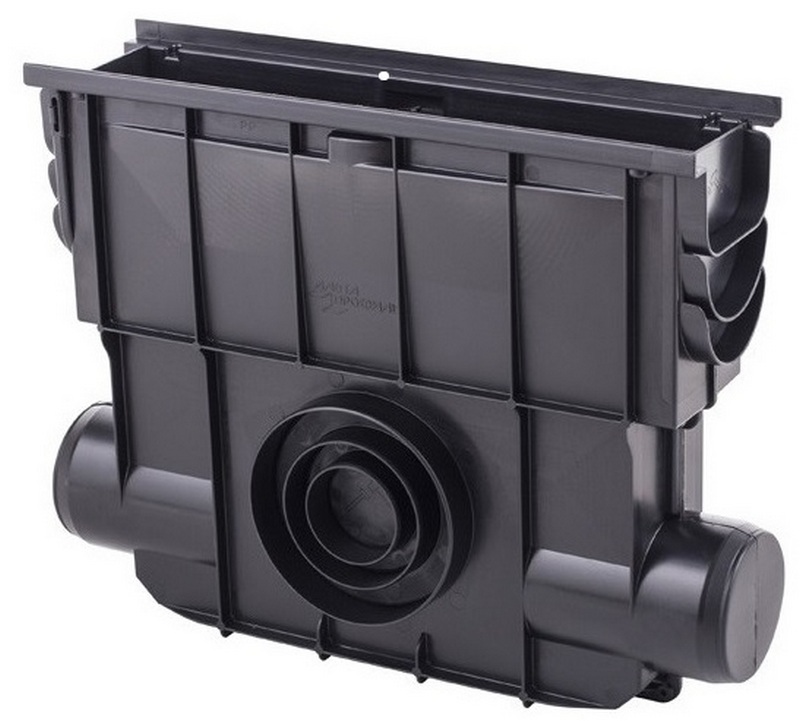
- Durable manufacturing material;
- Reliable brand - 100% counterfeit protection;
- Ease of integration into an existing system.
- Not detected.
2nd place: "Rain inlet ALTA-profile AP-00000007110"
votes 0
The storm water inlet is included in the standard drainage system to ensure the protection of the foundation and the territory from the accumulation of storm, melt water and the remains of snow melt manifestations. The service life is more than 20 years. The component is made of dense PVC and measures 312 x 312 x 300 mm. The model is quite easy to install in a standard storm sewer. The recommended cost for retail chains is 1600 rubles.

- Ease of installation;
- Rugged construction;
- Adequate cost.
- Not detected.
1st place: "Basket for storm water inlet ALTA-profile AP-00000007113"
votes 0
Designed to collect melt water and precipitation, to protect the foundation of the house. The model is made of durable material - polyvinyl chloride. It features an extended service life, its dimensions are 250 x 250 x 187 mm. The recommended cost for retail chains is 1650 rubles.

- Convenience of the device and the possibility of using it in an open / closed way;
- Has small dimensions;
- Long term operation.
- Not detected.
Storm grates
3rd place: "Plastic channel grating AP-00000007120"
votes 0
This grating is used for arranging a surface storm drainage system. It is made of durable plastic, supplied in separate parts, from which it is easy to build almost any geometrically correct bend. Excellent for filtering the remnants of melted snow, calmly withstands heavy precipitation without being subjected to premature deformation. The recommended cost for retail chains is 300 rubles.

- Rugged construction;
- Possibility of all-weather use;
- Easy integration into existing systems.
- Not detected.
2nd place: "Steel channel grating AP-00000007098"
votes 0
This grating model is made of durable metal and is used to filter large foreign fragments, which should not enter the drainage channel. It is supplied in separate parts, with the help of which it is possible to build any drainage route.It is characterized by excellent strength qualities, the dimensions of each element are - 998 x 130 x 22 mm. The recommended cost for retail chains is 800 rubles.

- Durable metal workmanship;
- Affordable cost;
- Possibility to cover any channel route.
- Not detected.
1st place: "L-M grating for channels DN100 steel"
votes 0
Stamped steel grating is used to close the channels for removing storm drains from the surface of the site. The element performs a decorative and protective function, prevents the formation of puddles, the ingress of foreign objects into the tray. The grate is indispensable for laying drainage paths, laying the blind area of the foundation, installing canopies. If the part is damaged, you can buy only one section - the product is sold by the piece. The recommended cost for retail chains is 850 rubles.

- Has high strength;
- Does not break in the cold - in winter, dismantling is not required;
- Due to its low weight, it can be easily removed for cleaning the gutters;
- Zinc coating increases service life and prevents corrosion.
- Not detected.
Drainage channels
3rd place: "Channel" L-M "plastic DN100 1000x145x80 mm"
votes 0
The channel plastic DN100 is used in drainage systems. The product is designed for wastewater disposal. The channel is made of practical and durable material. A plastic product is not destroyed by dirt and toxins, and will last a very long time. If necessary, it is easy to replace. The recommended cost for retail chains is 350 rubles.

- Light weight;
- Easy to install;
- Durability;
- Moisture resistant.
- Not detected.
2nd place: "Drainage channel 110 AP-00000007111"
votes 0
This type of channel is highly durable, supplied in separate elements, with the help of which it is very convenient to build any drainage route. It is characterized by a durable material of manufacture, however, in case of mechanical damage, the possibility of replacement will not be difficult. The recommended cost for retail chains is 450 rubles.

- Easy installation;
- A light weight;
- Adequate cost.
- Not detected.
1st place: “Plastic channel “L-M” with a plastic grating 1000x115x95 mm”
votes 0
Plastic tray with plastic grating, 1000x115x95 mm, class A15 is designed for surface drainage of storm and melt water in areas with pedestrian traffic. It is used to divert houses and buildings from the foundation, as well as from paths, in areas with pedestrian traffic. Tray kit with plastic galvanized grating is a ready-to-install solution, it has the ability to connect them together in a line of the required length. It is better to release the collected water from the line of trays into the sewer through a sand trap with a plastic grate, which will first clean the drains from particles of dirt and sand. Also, the release of collected water can be carried out by connecting a sewer pipe Ф70 mm directly to the channel, to specially provided flanges in the bottom of the tray. It is possible to connect a sewer pipe Ф110 mm using an adapter to a pipe Ф110 mm.If necessary, it is possible to carry out the angular and T-shaped connection of these channels with each other using special flanges for the angular connection located in four places on the side surfaces of the tray. The recommended cost for retail chains is 550 rubles.

- The versatility of the kit;
- Very reasonable price;
- Easy integration.
- Not detected.
Instead of an epilogue
The presence of storm sewers allows timely removal of rain and melt water from buildings and from the surface, maintaining the foundations and the site in optimal condition. Unlike drainage, which under certain conditions can dry out the site, storm sewers at home are safe. And an unpresentable ditch can be turned into an element of landscape design.
new entries
Categories
Useful
Popular Articles
-

Top ranking of the best and cheapest scooters up to 50cc in 2025
Views: 131653 -

Rating of the best soundproofing materials for an apartment in 2025
Views: 127694 -

Rating of cheap analogues of expensive medicines for flu and colds for 2025
Views: 124521 -

The best men's sneakers in 2025
Views: 124036 -

The Best Complex Vitamins in 2025
Views: 121942 -

Top ranking of the best smartwatches 2025 - price-quality ratio
Views: 114981 -

The best paint for gray hair - top rating 2025
Views: 113398 -

Ranking of the best wood paints for interior work in 2025
Views: 110320 -

Rating of the best spinning reels in 2025
Views: 105332 -

Ranking of the best sex dolls for men for 2025
Views: 104369 -

Ranking of the best action cameras from China in 2025
Views: 102218 -

The most effective calcium preparations for adults and children in 2025
Views: 102013
